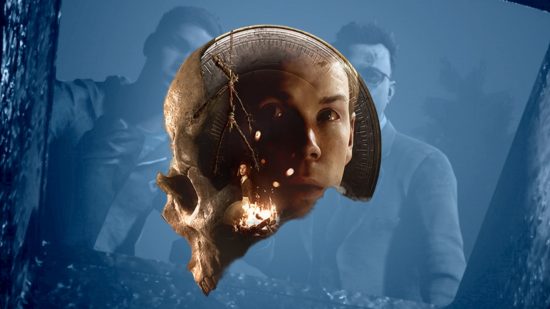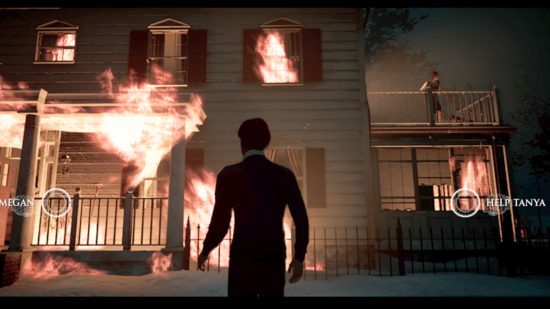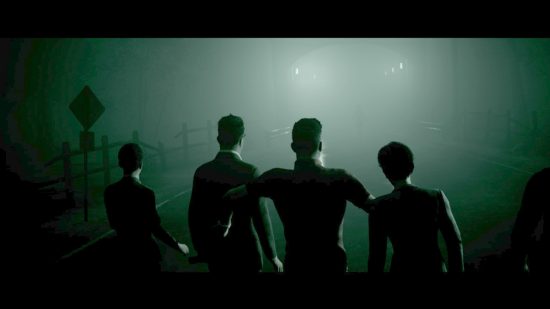Our Verdict
Despite a couple of performance issues, the intriguing story, good character design, and consequences to your actions mean that Little Hope remains a solid horror game for you to enjoy on Nintendo Switch this Halloween.
In October 2020, Supermassive Games and Bandai Namco released Little Hope, the second installment in The Dark Pictures Anthology. Spurred on by the unbridled success of Until Dawn and the positive reception of Man of Medan, Little Hope looked to capture and scare audiences once more in a story that takes you to the deserted town that is Little Hope – a place that hides a sinister secret.
Though its reception at launch was mixed to average from most outlets (though Little Hope does boast a couple of eights and sevens), I enjoyed my time with the game as a horror fanatic who longs for the true successor of Until Dawn once more. Upon hearing that Little Hope was coming to Switch, I simply knew it was time to revisit that cursed town and experience the story all over again.
Straight out of the gate, I applaud the acting in Little Hope, as, just like other Supermassive titles, it features some well-known faces in its cast. Until Dawn has Hayden Panettiere and Rami Malek, Man of Medan features Shawn Ashmore, House of Ashes boasts Ashley Tisdale, and Little Hope stars Will Poulter. If you’re not familiar with the latter, he’s known for various roles, including the horror movie Midsommar (Poulter was also the original choice for Pennywise in the Stephen King’s IT movie adaptations). However, I personally enjoy Poulter the most in We’re the Millers. Poor Kenny, rumor has it he’s still not been paid to this day.
Just in case you don’t know the story of Little Hope, allow me to dive into the narrative and the characters that reside within. Poulter takes on the role of Andrew, a student who’s on a class trip with his fellow classmates Angela, Taylor, and Daniel, alongside their professor, John. Before you get to play as these characters, you must first journey to the past to experience quite a harrowing ordeal for a poor family, wherein all but one family member dies.
I want to keep things as vague as possible as the story of Little Hope features twists and turns that are best to experience for yourself, even if the game is three years old at this point. When you finally begin to take control of the main cast, that’s when your choices and actions start to matter. Just like in Until Dawn, there are clues you can find to unravel the mystery of Little Hope, and the more you find, the better your chances of getting a good ending.
These clues can lurk in any nook and cranny, from the woods to the streets and buildings. It’s a good idea to go over a new area with a magnifying glass whenever it’s time to explore a new location. Even if you’re not bothered about which ending you get, there are some interesting tidbits about the story that you can only discover through clues.
Since I already mentioned the word ‘endings,’ I should probably elaborate. Like other Supermassive titles, Little Hope features multiple endings – everyone can live and die with an amalgamation of options in between. This certainly adds a great level of replayability, especially since there are numerous ways in which each character can meet their demise. Without giving too much away, if one of the protagonists dances with the Grim Reaper in an early chapter, it may well be what causes a fellow character to meet their maker in the later stages of the game.

More than that, it’s the choices you make that can also have unforeseen consequences, so choose wisely. This remains one of my favorite features throughout Until Dawn, The Dark Pictures Anthology, and The Quarry – the amount of different paths you can take is fantastic and is a primary reason why I have completed each game numerous times.
Regrettably, there’s one major complaint I still have with the game even three years on, and that’s the quick-time events. Honestly, the length of time available feels so long that I actively have a choice in how the scene plays out. For some, that might be a positive about Little Hope, but for me, this takes some of the tension out of the game. I want to have a real possibility of losing my characters, but Little Hope doesn’t put the pressure on me. In Until Dawn, the quick-time events are brutal but fair. I had to work hard to keep my characters alive, so much so that I failed to save everyone on my first try, yet managed it in Little Hope.
However, I’d be remiss if I didn’t point out that Little Hope boasts three different difficulty settings on Switch, and I chose the middle-of-the-road option as that’s what the majority of gamers tend to prefer. I fully intend to play through the ‘lethal’ difficulty setting, and should it live up to its name, I shall update this review to reflect that. Unfortunately, there’s a balance to be had, and Supermassive continues on its trend of not meeting the standard set by Until Dawn. That’s not to say that I don’t enjoy The Dark Pictures Anthology because I do; it’s just that the game that started it all does everything better.
However, Little Hope does live up to Until Dawn in one aspect – it has enigmatic characters that add something to the game. Essentially, each character has a role to play in the grand scheme of things, much like in the mountains back in 2016. To truly get the most out of a horror game of this variety, you need to care about what happens to the cast. Now, that doesn’t mean you have to want them all to live. On my first playthrough, I didn’t care much about what happened to the professor, for instance, because the character serves their purpose well.
I find him to be irritating of the highest order and frequently question why on earth he’s a teacher, in all honesty. In a game about choices and survival, I can’t say his fate bothered me, but that also means I paid attention to his surroundings and the like – if there was a blatant opportunity to screw him over I was going to take it, just like I did with Emily in Until Dawn.
As for performance on Nintendo Switch, Little Hope suffers from a drop in frame rates from time to time and can appear grainy on occasion. However, neither of these issues are frequent enough for me to condemn Little Hope as an unplayable mess – it certainly isn’t reminiscent of Mortal Kombat 1. Honestly, those images of Johnny Cage haunt my dreams, the biggest source of nightmare fuel since Paramount first unveiled Sonic for the live-action movie.
In the spirit of spooky season, I do recommend giving Little Hope a try if you’re yet to play. Heck, even if you’re as familiar with it and its fellow Supermassive Games titles as I am, it’s still the perfect time to revisit Little Hope. Each of The Dark Picture Anthology entries has a movie night (don’t play alone) game mode for a reason, so I suggest you grab some buddies and have a marathon of horror games.
We recommend Poppy Playtime and FNAF for titles to play this year, and our FNAF characters and Poppy Playtime characters guides show why.


